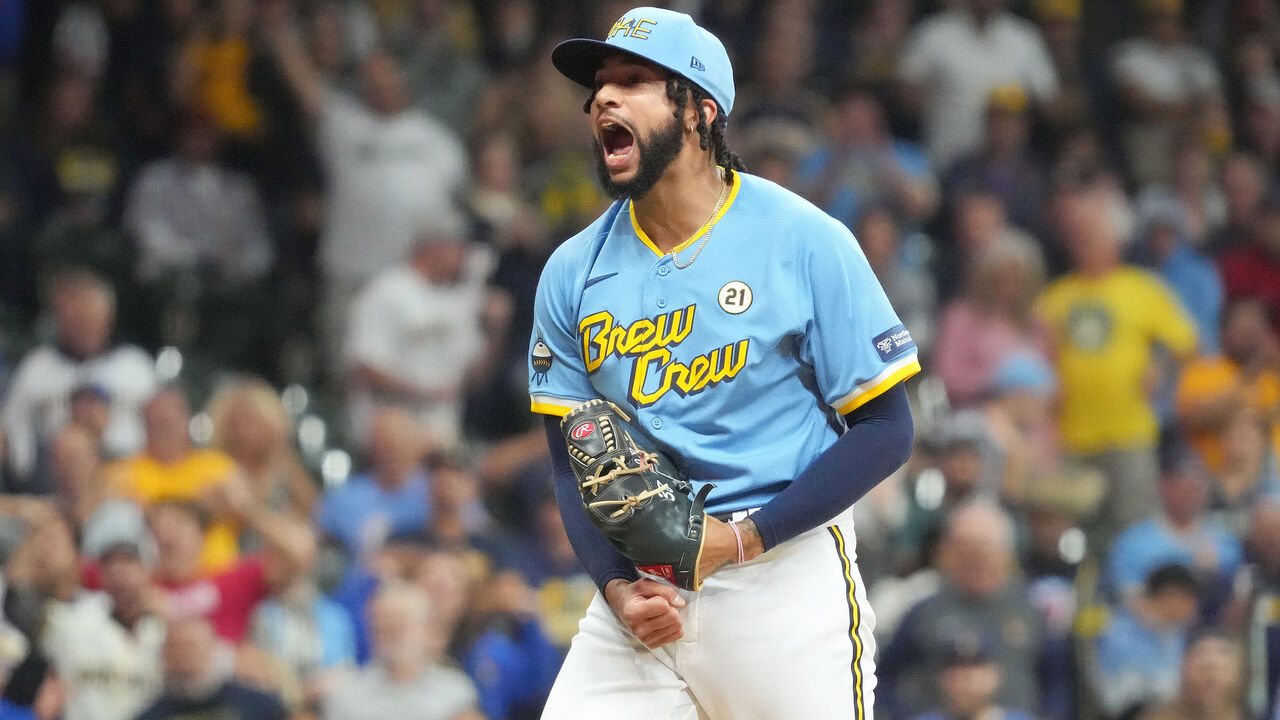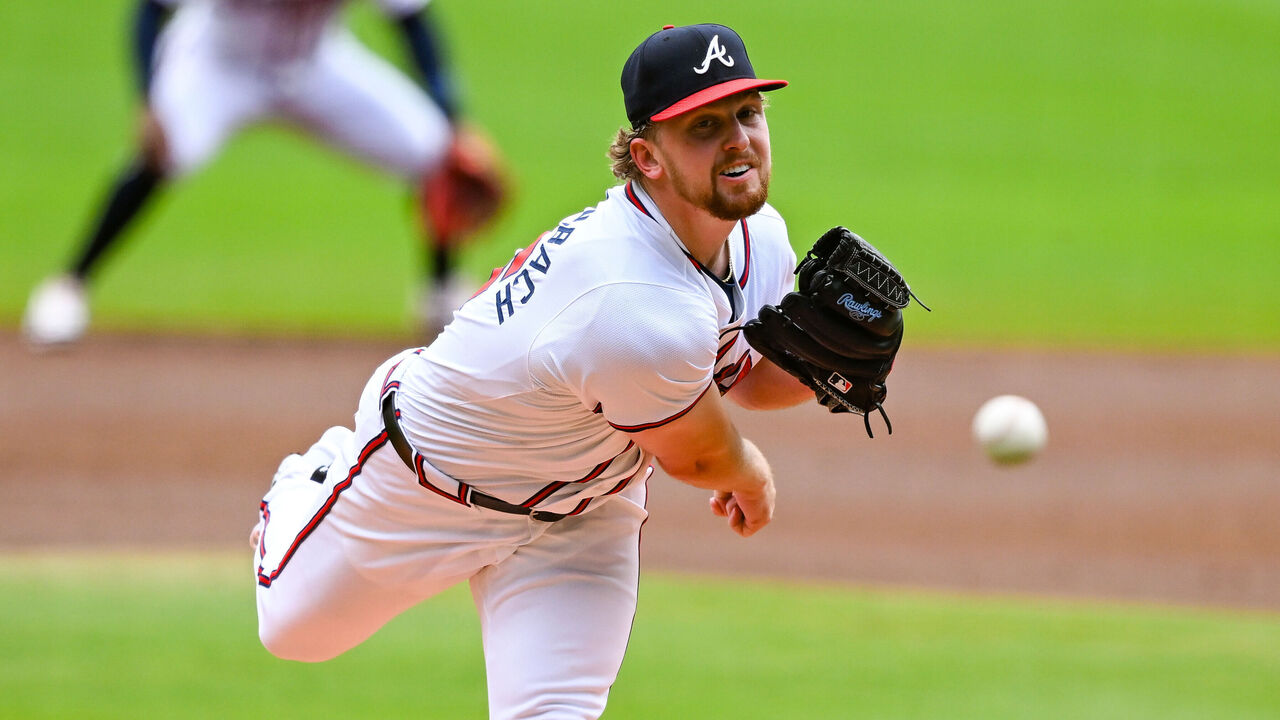Why your team can win the World Series: NL wild-card round edition
This year's postseason field is one of the most open in recent memory.
There was no 100-win team in the majors for the first time since 2014, after a stretch of six straight full seasons with at least three of them.
The last time MLB lacked a super team, the 88-win Giants beat the 89-win Royals in seven games to win the 2014 World Series.
This October, every team in the field owns a path to the title. So, how can your team win it all? Let's take a look at the four National League teams in the wild-card round.
Monday: American League edition
No. 3 Milwaukee Brewers
The Brewers are like the Guardians: division champions in part because of a dominant bullpen.
Win Probability Added (WPA) is a better measure of bullpen performance than WAR, because WPA measures the cumulative change in win expectancy during each plate appearance. Win expectancy changes based on the score, inning, number of outs, and the number of runners on base. The highest-leverage situations and biggest swings in WPA often come later in games.
WPA's been calculated back to 1974 and this year's Guardians and Brewers rank first and second all time in bullpen WPA, respectively.
A team with a great bullpen can overachieve on a run-differential basis because it's less likely to blow a late-game lead and more likely to help facilitate a comeback. Cleveland was 53 of 69 in save situations; Milwaukee 53 of 72.

Closer Devin Williams returned midseason from a back injury and has been dominant with his "air bender" changeup. In his absence, Trevor Megill emerged as a dominant and trusted back-end option in the first half.
The Brewers have other things going for them, too.
Jackson Chourio's emerging as a superstar. Rookies tend to be better in the second half of the season, and after struggling in the first half (.243 average, 88 wRC+), Chourio put up star numbers in the second (.310 average, 150 wRC+).
The Brewers also have one of the game's most complete catchers in William Contreras (131 wRC+, 5.4 fWAR), and one of the better shortstops in Willy Adames (32 homers, 21 steals, 119 wRC+, 4.7 fWAR).
They'll need length and excellent outings from ace Freddy Peralta to help a thin rotation and not tax the bullpen. They can surprise this fall, if they get a bit more from their rotation (25th in WAR).
No. 4 San Diego Padres
If the postseason's about peaking at the right time, no team's hotter than the Padres, who posted the majors' best record after the All-Star break (43-20).
The Padres made big swings in trades and free-agent signings in recent years, which have largely paid off. Star talent plays up in October - there are fewer off days, more urgency, and less need for depth and rest.
Deals to acquire Dylan Cease from the White Sox and Michael King from the Yankees bolstered the rotation. King, Cease, and Joe Musgrove all have sub-2.70 ERAs in the second half; this group can match up with about any rotation in the field.

By acquiring Luis Arráez from Miami, the Padres added a unique talent who improves the top of their lineup with his unusual contact ability. They also added reliever Tanner Scott at the deadline to strengthen the back of their bullpen.
There's plenty of internally developed talent, too. Like the Brewers, the Padres also feature an emerging young star in Jackson Merrill, who had 5.3 fWAR as a 21-year-old, giving San Diego another game-changing talent to go with Fernando Tatis Jr., Manny Machado, and Xander Bogaerts. Add in Jurickson Profar's late-career breakout season and the Padres enjoy an incredibly balanced team.
World Series winners historically feature deep lineups with an average of 4.1 position players recording at least 3.0 WAR. The Padres and Brewers each have four to pace the NL wild-card round.
The formula's simple for the Padres to win it all: keep doing what they're doing.
No. 5 Atlanta Braves
The Braves aren't the team they were a year ago, when they produced one of the greatest offensive seasons in baseball history only to lose in the NLDS to the Phillies. They recently announced star third baseman Austin Riley would miss the rest of season, Ronald Acuña Jr.'s been out since late May, and Spencer Strider made only two 2024 starts. Ozzie Albies and Michael Harris II are back from their injuries, but the Braves aren't at full strength.
They're still a threat, though.
Their pitching staff leads the majors in strikeout rate in the second half at 28.5%, which is more than five percentage points greater than the league average. That's a big deal because strikeouts gain importance in the postseason.

The Braves are loaded with bat-missing arms from Chris Sale (assuming he rebounds from back spasms that kept him from pitching Monday) to Spencer Schwellenbach.
The best way to top postseason opponents is to overpower them on the mound and at the plate, and while the Braves had a down year offensively, they still finished fifth in MLB in home runs (and third in the second half).
Marcell Ozuna, Matt Olson, and Harris each had a 130 wRC+ or better in the second half. They still have star power at the plate and on the mound, and that combination can carry a team in October.
No. 6 New York Mets
The Mets are 61-35 since Grimace threw out the first pitch June 12, the best mark in baseball in that span. Coincidence or magic? We can't explain all the powers that exist in the universe.
Shortstop Francisco Lindor - in a horrible slump to begin the season - has carried the team since that fateful day, and he'd be an MVP winner in a world without Shohei Ohtani. Lindor's remarkable performance Monday secured a postseason berth for the Mets:
Francisco Lindor with the most important Mets homer in recent memory. You can't make this stuff up.
— Anthony DiComo (@AnthonyDiComo) September 30, 2024
"M-V-P!" chants at Truist Park.
(This is a real update. You're not dreaming it.)
Mets 8, Braves 7, top nine. pic.twitter.com/eoYxELqVIW
Since June 12, the Mets are sixth in the majors in home runs. They have power up and down their lineup, often a key to navigating October.
Like the Brewers, they have an elite closer in Edwin Díaz, who's getting stronger the further he's removed from the knee injury that kept him off the field in 2023. Díaz limited opponents to a .138 batting average in the second half (entering play Monday).
To make a deep October push, the Mets will need more magic from starting pitchers like Sean Manaea (3.48 ERA in a strong second half), Luis Severino, and Tylor Megill.
While the Mets don't boast the field's strongest team on paper, they have enough firepower to be this year's Diamondbacks and keep this remarkable run going.
Travis Sawchik is theScore's senior baseball writer.
HEADLINES
- Giddey ties career-high with 5 triples to lead Bulls past Cavaliers
- Faulk scores only goal, Hofer makes 24 saves to help Blues blank Jets
- TNF bets: Seahawks host Rams for high-stakes NFC West clash
- Bears exploring potential stadium sites in Northwest Indiana
- Rookie Ward hopes to be involved in Titans' coaching search